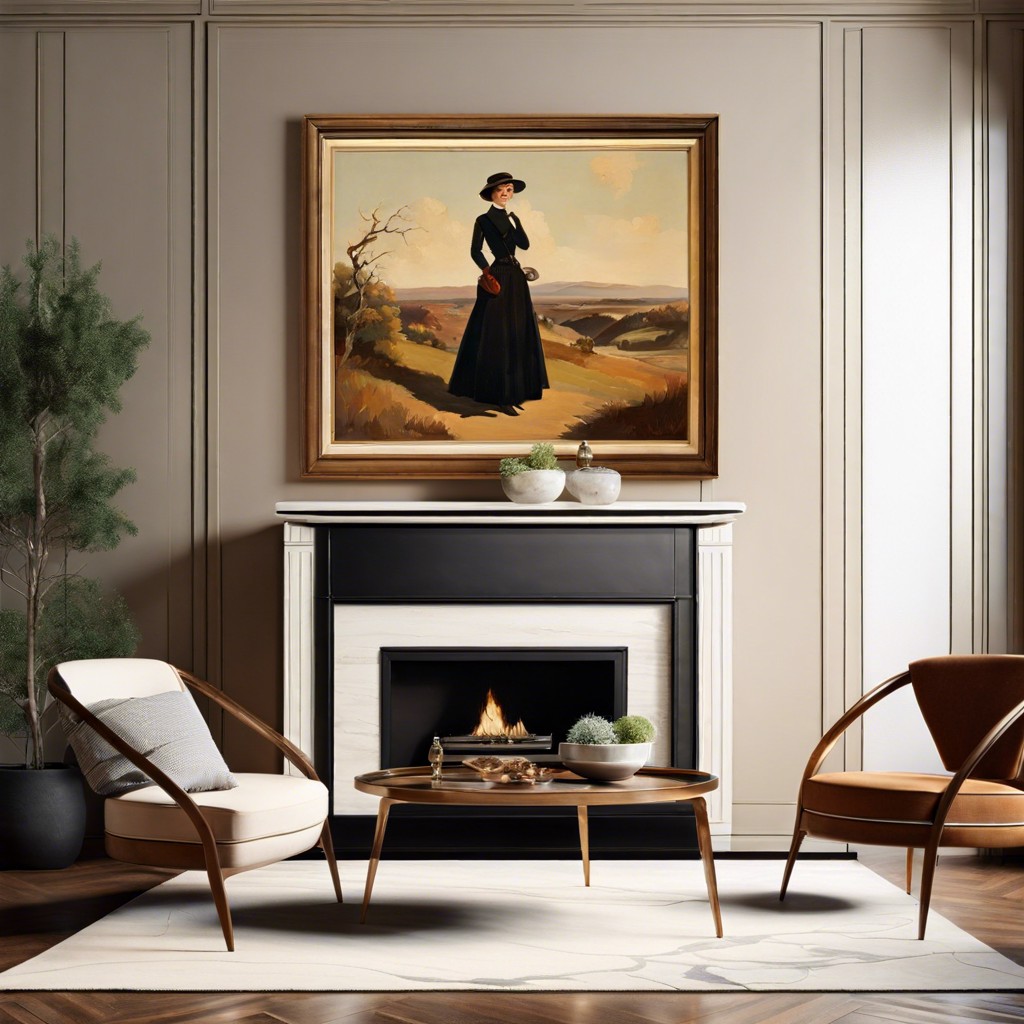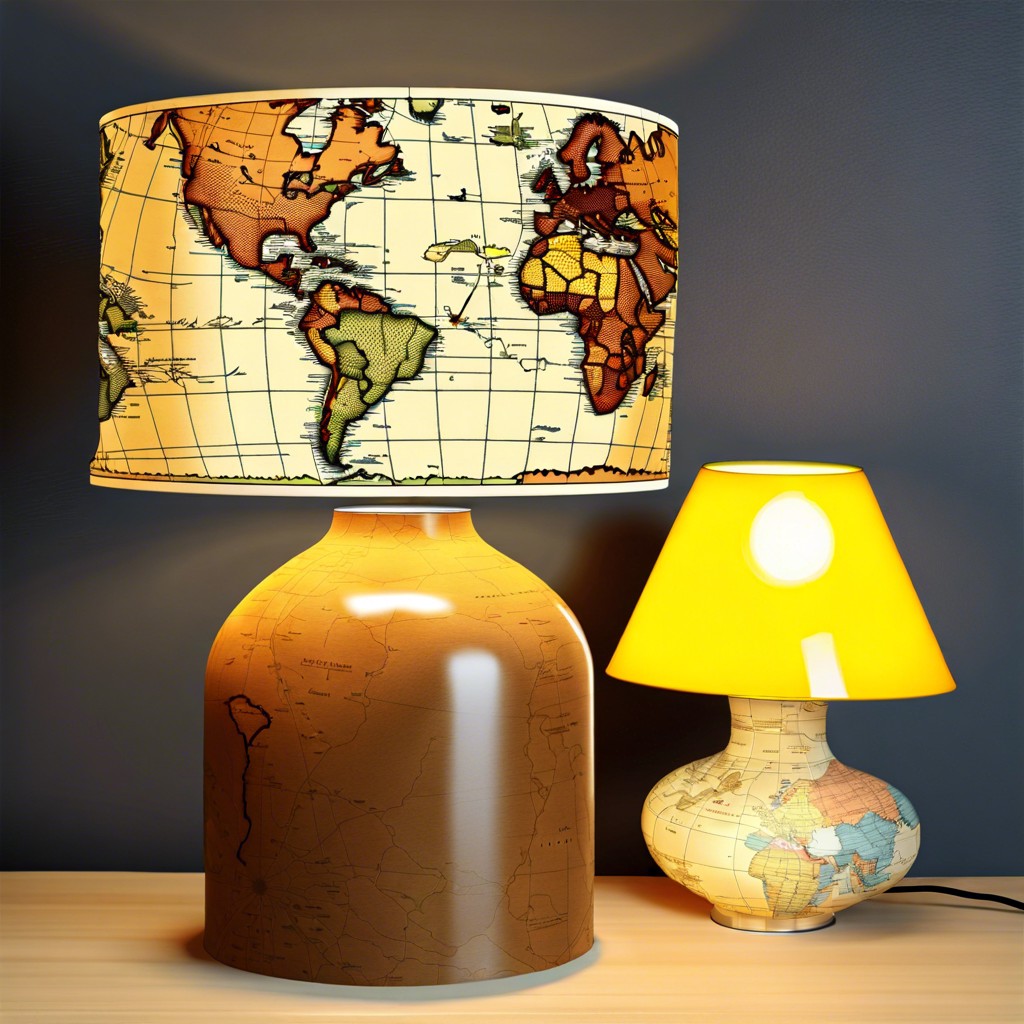Last updated on
Discover the appeal and nuances of vintage art, from its historical significance to tips on collection and preservation.
Key takeaways:
- Vintage art encompasses creative works from a previous generation.
- Vintage art adds character, nostalgia, and unique charm to contemporary interiors.
- Factors to consider when buying vintage art include condition, provenance, artist significance, and relevance to your collection.
- Assessing the value of vintage art involves considering rarity, provenance, condition, artist significance, market trends, and historical importance.
- Authenticating vintage art involves examining materials, signature analysis, provenance research, consulting experts, and scientific testing.
Definition of Vintage Art

Vintage art encompasses creative works from a previous generation that reflect the style and trends of that period. Typically, this term applies to pieces created between 20 and 100 years ago. The timeline is not rigid; it hinges on the art’s ability to capture the essence of the era it represents. Pieces from the mid-20th century, for example, might be considered vintage due to their distinct aesthetic that marks the post-war era.
Such art includes a variety of mediums – paintings, prints, sculptures, and photographs – offering a window into the past. Its allure lies not just in age but in the story each piece tells, providing a historical context that adds depth to the work.
Collectors prize vintage art for its character, nostalgia, and unique charm, distinguishing it from both antique pieces, which are typically over 100 years old, and contemporary works from current artists. As a bridge between past and present, vintage pieces add an element of timelessness to collections, resonating with those who appreciate the echoes of bygone eras.
Significance of Vintage Art in Contemporary Interiors

Integrating vintage art into contemporary interiors bridges past and present, offering a unique character to modern spaces. Each piece tells a story, infusing a room with history and depth that new art might not replicate. The juxtaposition of old and new elements can be striking, challenging the traditional notions of design and creating a dialog between various periods.
Moreover, eco-conscious decorators appreciate the sustainability of repurposing existing artwork. Choosing vintage pieces reduces the demand for new items and the environmental footprint associated with their creation. It’s a way to be stylish and responsible simultaneously.
Collectors often seek out vintage art for its potential investment value. Unlike mass-produced decor, vintage artwork can appreciate over time, making it a worthwhile consideration for both aesthetic appeal and financial savvy.
The trend of personalizing space also benefits from vintage art, allowing for an eclectic mix that reflects individual tastes and stories. Each selection contributes to a unique atmosphere – a gallery wall of vintage oil paintings, for instance, can add warmth and texture that cannot be found in contemporary art alone.
Lastly, vintage art can act as a conversation starter, evoking curiosity and discussions about its origin, the artist’s intention, and its journey through time. It’s not just decor; it’s a catalyst for connection and reflection.
Factors to Consider When Buying Vintage Art

When selecting vintage art, condition is paramount. Scrutinize the artwork for any damage such as tears, cracks, or fading. These imperfections can affect both aesthetic value and price. It’s also vital to evaluate whether the art has been restored, as professional restoration can maintain value, while poor work can diminish it.
Research the provenance carefully. An artwork with a well-documented history can provide assurance of its authenticity and often increases its worth.
Consider the artist’s significance within the art world. Established artists with a recognized body of work tend to be more valuable. Emerging or lesser-known artists may offer more affordable options with the potential for value appreciation.
Think about the art movement or era the piece represents. Certain periods may integrate better with your existing decor or personal taste. Moreover, some movements maintain popularity more steadily, impacting long-term desirability and value.
Lastly, assess the artwork’s relevance to your collection. Whether you prioritize aesthetic appeal, investment potential, or historical significance, ensure the piece aligns with your collecting goals.
Determining the Value of Vintage Art

Assessing the value of vintage art hinges upon several key factors. Rarity stands paramount; pieces with limited availability invariably command higher prices. Provenance, the artwork’s history of ownership, significantly influences its value; documented lineage can increase a piece’s worth.
Condition plays a critical role; well-preserved pieces without restoration are more valuable than those with wear or alterations. The artist’s significance contributes to the art’s market value, where works by renowned artists or those gaining recognition fetch higher prices.
Market trends should not be overlooked. Collectors’ current preferences impact value, making some vintage art styles more sought after than others. Lastly, historical importance, exemplified by art representative of significant movements or eras, often results in a higher appraisal.
Judicious evaluation of these factors provides a foundational understanding of a vintage artwork’s worth, serving as a guide for both collectors and investors.
Authentication of Vintage Art

Authenticating vintage art is crucial for both valuation and historical integrity. Understanding physical attributes such as material and craftsmanship alongside provenance is foundational.
- Examine Material and Technique: Evaluating the materials used, like canvas, paper, or wood, and inspecting the technique can indicate the piece’s age.
- Signature and Markings Analysis: A signature or maker’s mark can validate the creator, but it requires comparison with authenticated works for confirmation.
- Provenance Research: A documented history detailing past ownership enhances credibility and can be verified through sales receipts, exhibition records, or catalogs.
- Consultation with Experts: Art historians, appraisers, or specialists in the particular vintage era provide invaluable insights and can aid in authentication methods such as dating and stylistic analysis.
- Scientific Testing: In some cases, tests such as radiocarbon dating or X-ray fluorescence (XRF) analysis can authenticate the period a piece was created by assessing materials that are not visible to the naked eye.




